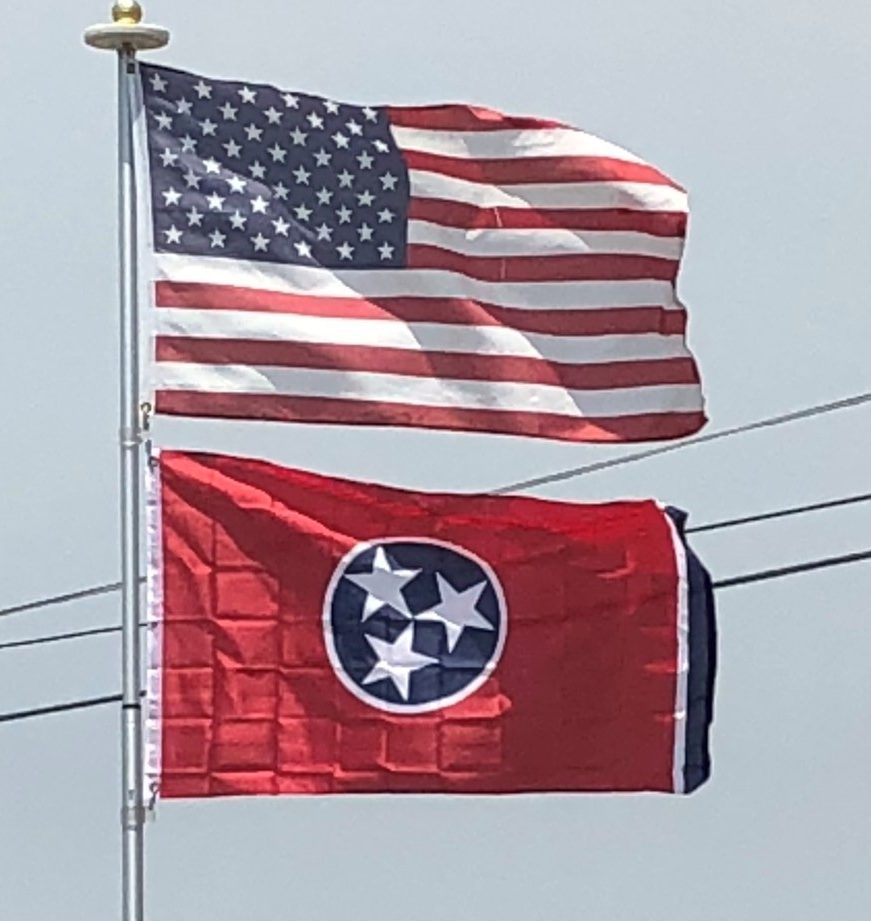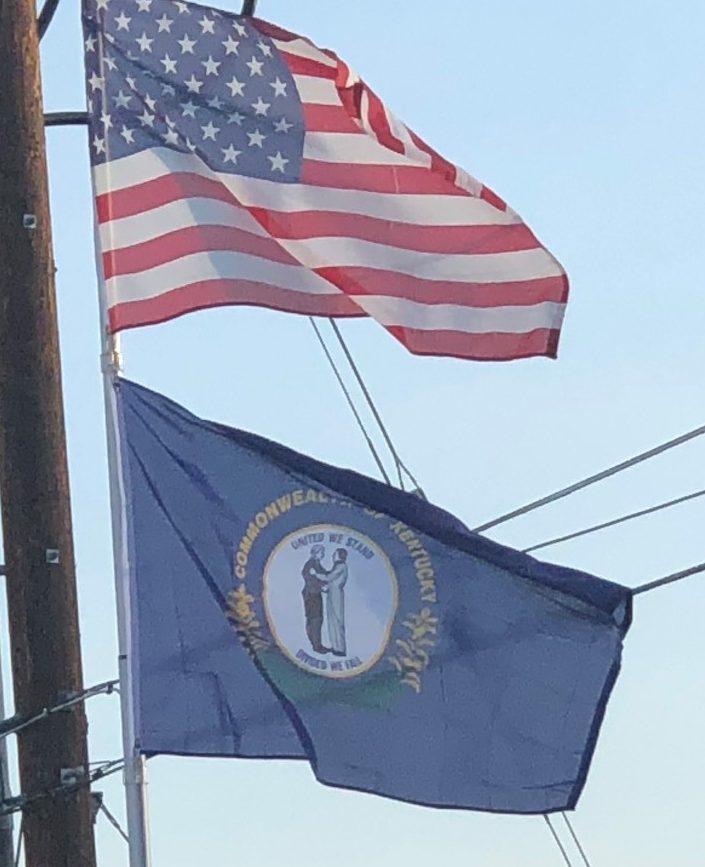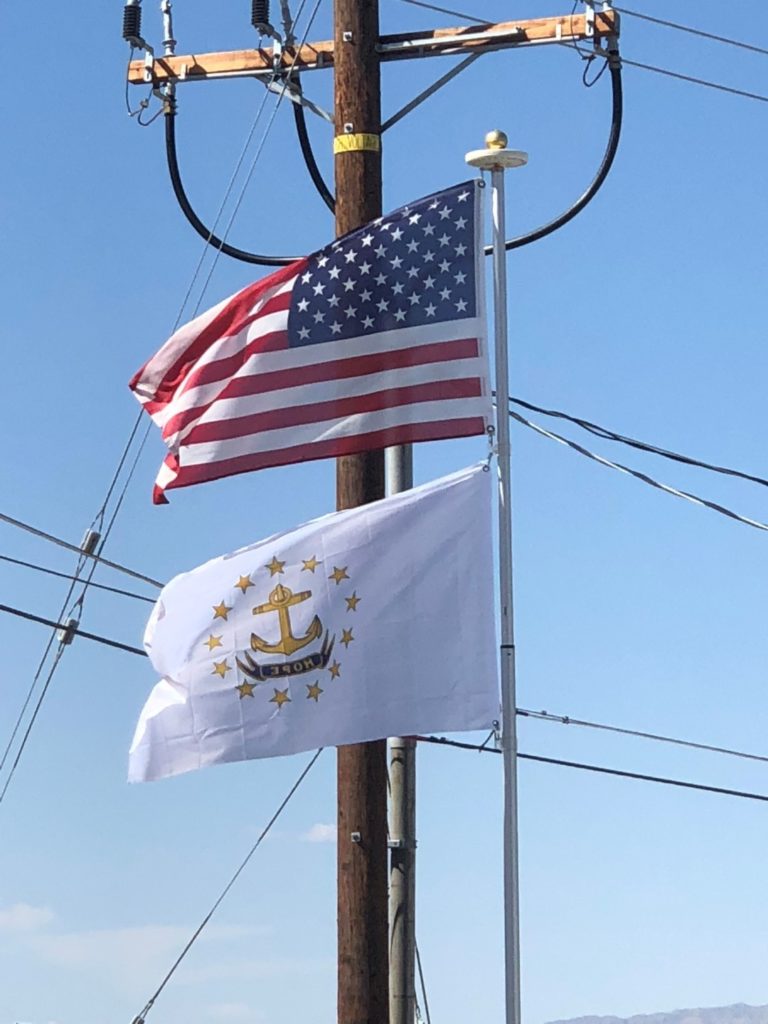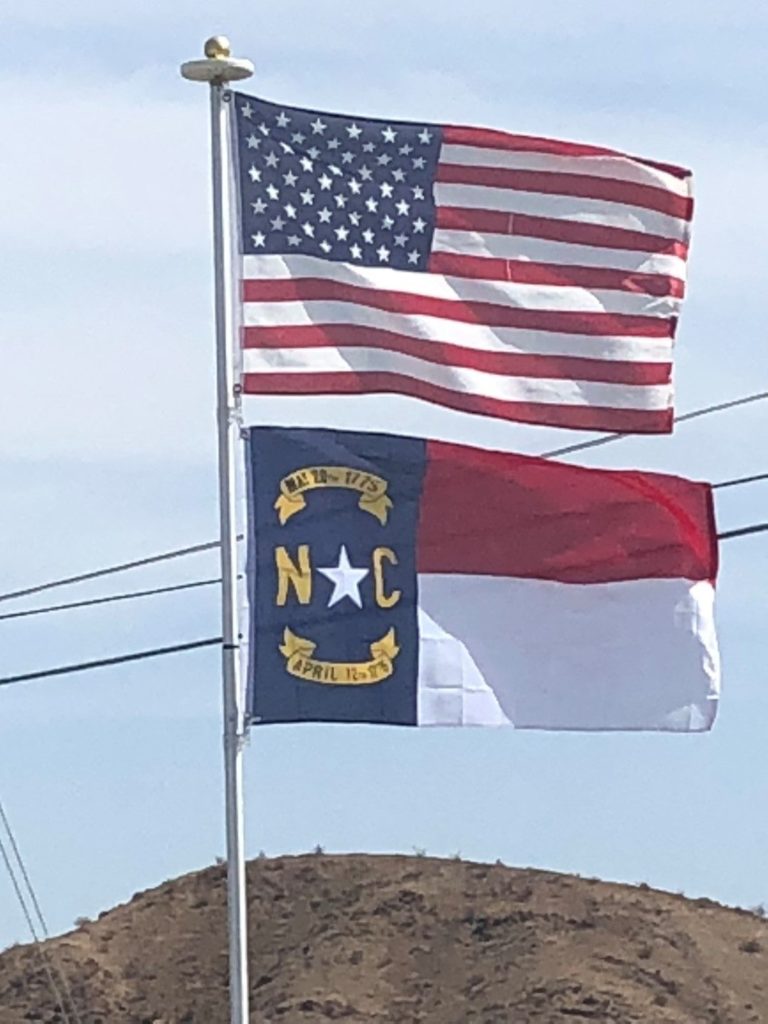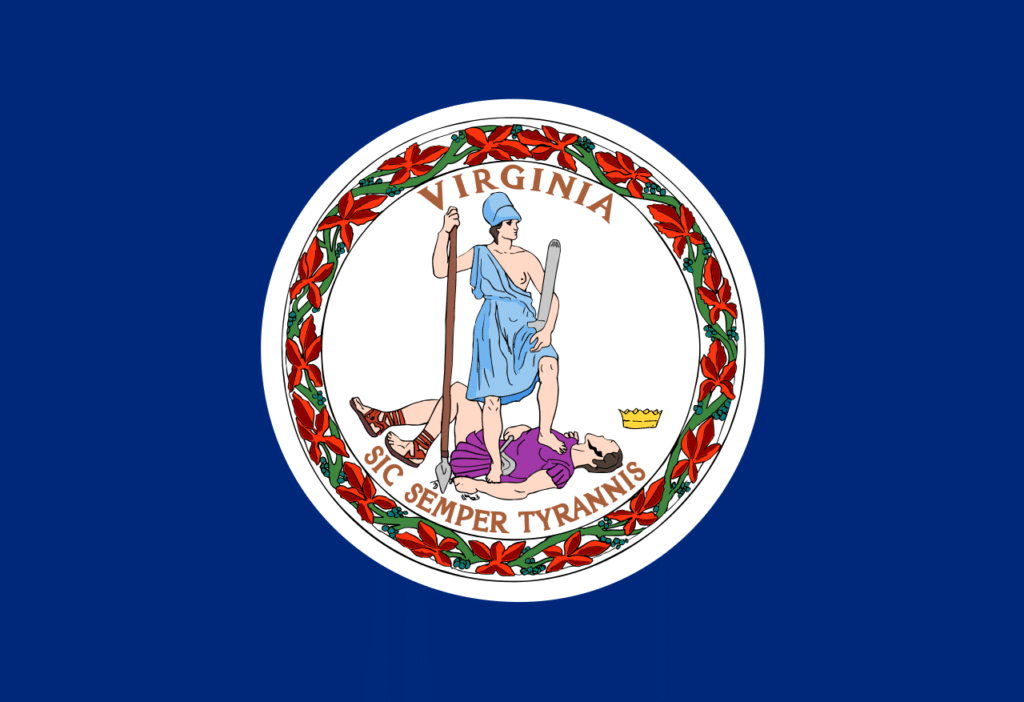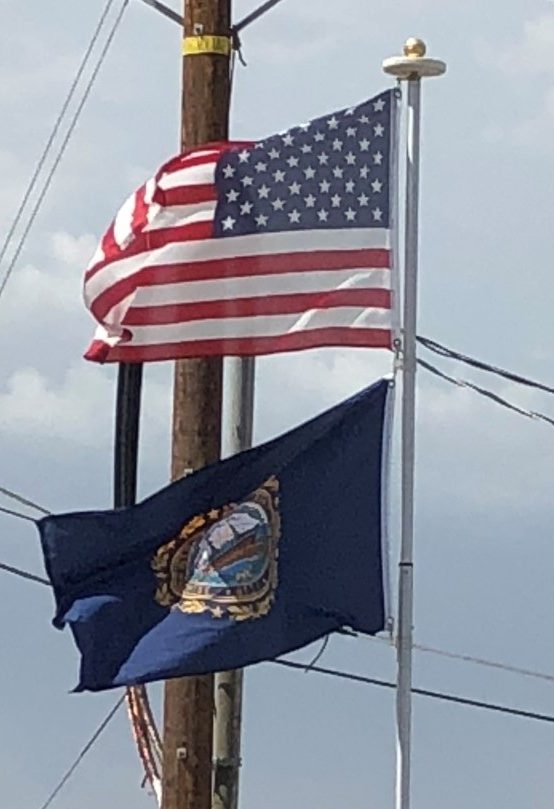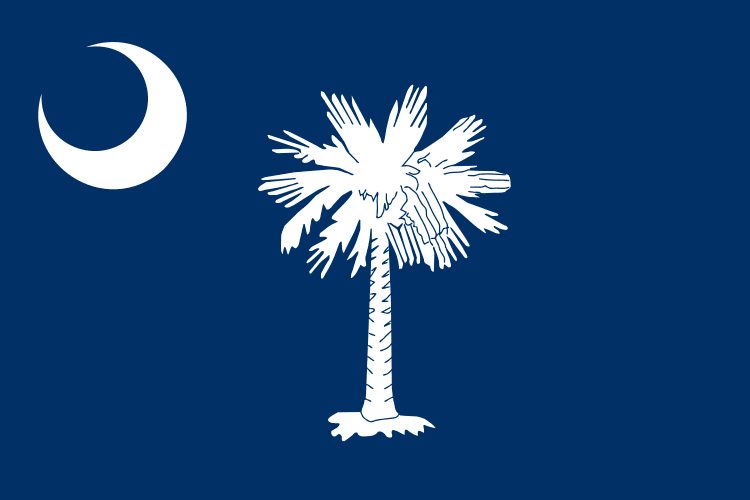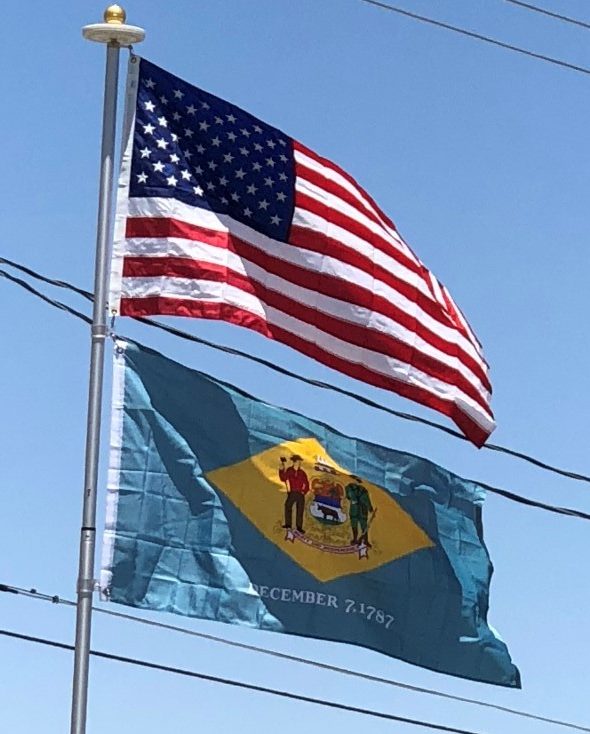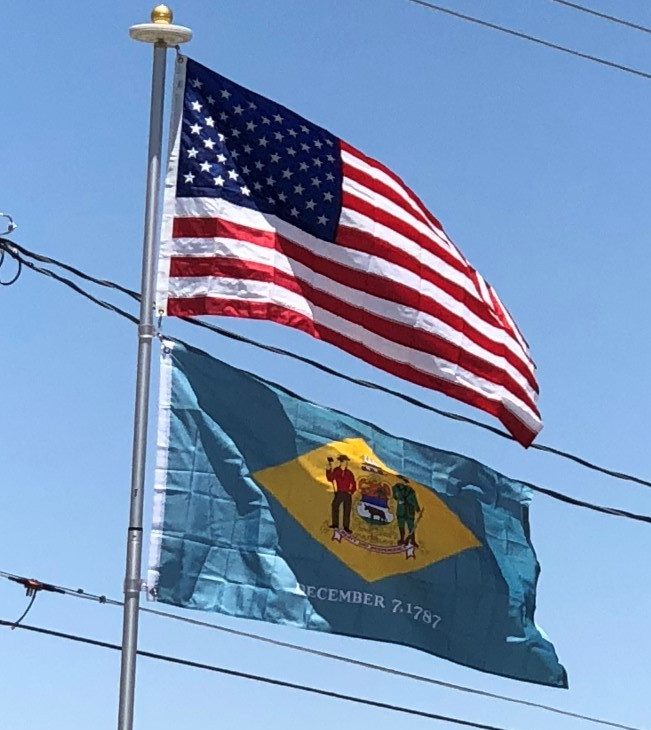Tennessee – The Volunteer State
The flag of the state of Tennessee consists of an emblem on a field of red, with a strip of blue on the fly. The emblem in the middle consists of three stars on a blue circle.
The three stars represent the three Grand Divisions of the state, East Tennessee, Middle Tennessee, and West Tennessee. The blue circle around the stars represents the unity of the “Grand Divisions” of the state. The blue bar at the edge of the flag was just a design consideration. When asked about the blue bar, Reeves stated that “The final blue bar relieves the sameness of the crimson field and prevents the flag from showing too much crimson when hanging limp.”
